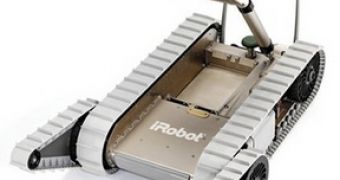Last week, a company announced plans to produce autonomous robots equipped with Taser guns, which will be sold to law enforcement agencies in the US. They will be used for crowd control and against civilians, a situation that raised concerns and gave birth to some interesting questions.
If such an armed autonomous robot accidentally kills a man, who will be charged with murder? Its makers, the police, no one?
The US military already uses PackBot, made by iRobot of Massachusetts, to carry lethal weapons and there are already 5,000 robots used by the US Army in Iraq and Afghanistan, up from about 150 in 2004, most of them being used to search caves and buildings for insurgents, detect mines and ferret out roadside and car bombs.
But when it comes to US citizens, things get a little complicated. This move to arm police robots with stun guns has been condemned by weapon researchers and not only from the US.
These new robots are not designed to kill, they will only be equipped with Tasers, an electroshock weapon, an incapacitant used for subduing a person by administering electric shock that may disrupt superficial muscle functions.
While usually not lethal, Tasers can accidentally kill people. Thought to be reliable and non-lethal by most police agencies, between June 2001 and June 2007, there were at least 245 cases of deaths of subjects soon after having been shocked using Tasers.
A recent one, in Texas, was recorded when police officers used a Taser to immobilize a man who previously had poured gasoline over himself, which caused him to burst into flames caused by the electric discharge of the weapon.
More cases like this could appear if autonomous robots would be responsible for maintaining order and dispersing civilian crowds. "The victim would have to receive shocks for longer, or repeatedly, to give police time to reach the scene and restrain them, which carries greater risk to their health," warns non-lethal weapons researcher Neil Davison, of the University of Bradford, UK.
Unfortunately, no manufacturer or law enforcement agency answered the big question, so they must be waiting for a precedent to come up with a solution.

 14 DAY TRIAL //
14 DAY TRIAL //